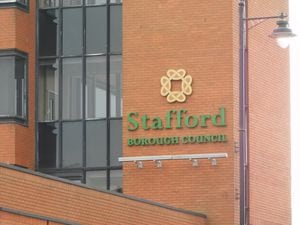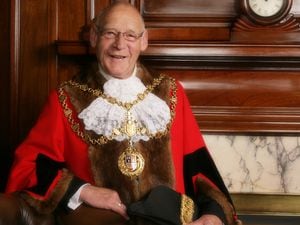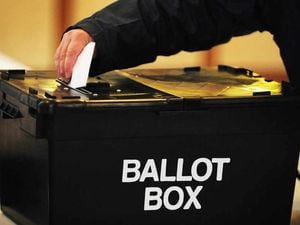The landmark election of 1918 that helped shape the future
A trio of pioneering women, who stood for parliament in a key poll after the First World War ended, faced a barrage of prejudice and dirty tricks
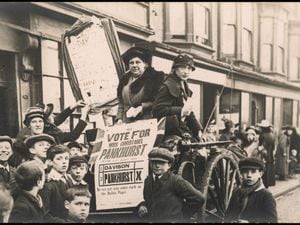
The General Election of 1918 was a landmark poll that – for good and bad – helped shape Britain's modern history.
Coming just a month after the Armistice brought the First World War to an end, it saw Lloyd George, who had taken over an Prime Minister in 1916, led his coalition to victory amid grand promises of social reform and 'a fit country for heroes to live in'.
It was also the first election in which women over the age of 30 could vote – and the first where women aged 21 or older could stand for Parliament.
The West Midlands was at the heart of three key campaigns to get women elected, and the trials and tribulations of their push for the Commons has been documented in a new book to commemorate the poll's centenary.
Taking on the Men – the first women parliamentary candidates 1918, examines the campaigns of suffragette Christabel Pankhurst, who stood in Smethwick, chainmakers’ strike leader Mary Macarthur, who stood in Stourbridge, and Margery Corbett Ashby, who faced future Prime Minister Neville Chamberlain in Birmingham's Ladywood.
It reveals the immense challenges they faced – with one prospective parliamentarian mercilessly trolled by a candidate from another party.
“The 1918 General Election was like no other”, says author David Hallam, a former Sandwell councillor and Shropshire MEP.
"In many ways this was when the crest of first wave feminism hit the rocks of electoral reality. Although women had the right to vote and stand, it was not until more than 50 years later that significant numbers of women really started to demand political equality with men.
"Up until then women were still very much a rarity in Parliament."
Polling in 1918 took place on December 14, with the count put back to a fortnight later to enable servicemen to cast their votes by post.
The three West Midlands candidates were among just 17 women to stand for more than 700 seats in the House of Commons.
"They were facing an uphill battle from the start," Mr Hallam says. "Putting up a woman as a candidate did not mean she would attract women voters, in fact some party managers believed that it meant a party would automatically lose 10 per cent of its vote."
Mr Hallam says that when women were put forward as candidates it was hard for them to get 'safe seats' – one's they had a decent chance of winning – as most of them were assigned to trade unionists by Labour, and in the case of the Tories, men who had been educated at Eton or Oxford.
Such was the case with Labour candidate Mary Macarthur, who faced the might of powerful local businessman John Wilson, who won the seat for the Liberals.
"He was from a very well known local family, which certainly made Mary Macarthur's task difficult," Mr Hallam says.
Macarthur also suffered from the fact that the bulk of her support from the 2010 chainmakers’ strike was in the Cradley Heath area.
What she did for them stood for little in a Stourbridge constituency that included Halesowen, Oldbury and Bearwood, while another setback occurred when the returning officer refused to allow her to use her maiden name 'Macarthur' on the ballot paper.
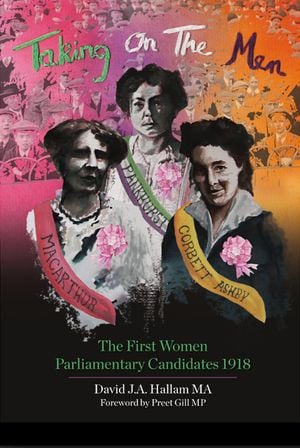
"She was declared on the paper as 'Mrs Andreson', which few people knew her as, which is believed to have contributed to her defeat," Mr Hallam said.
However, her main problem came in the form of Victor Fisher, who represented the National Democratic Labour Party and is said to have run a 'dirty tricks' campaign against her.
"She was probably the first woman politician to be trolled," Mr Hallam said. "Fisher did all he could to discredit her, including using language that can best be described as 'sexualised'."
Christabel Pankhurst, the daughter of suffragette leader Emmeline Pankhurst, suffered a narrow defeat in Smethwick in a two-horse race against Labour trade union official John Davison.
The Women's Party candidate's status as a suffragette was used against her in the campaign, Mr Hallam says. "It is a common misconception that all women liked the suffragettes," he added.
"Many of them saw them as rich and privileged, who were fighting for a cause that everyday people didn't believe in."
Despite Pankhurst receiving the backing of the London newspapers and Lloyd George, she ended up losing a tight contest by 775 votes.
Corbett Ashby possibly had the toughest task of them all, fighting Ladywood as a Liberal and taking on the formidable Chamberlain political machine who fielded Neville, the future Prime Minister.
"She was very unfortunate to be squeezed between Labour and the Conservatives and Unionists," said Mr Hallam.
Corbett Ashby would go on to fight another six election campaigns without success. She founded The Townswomen's Guilds in 1929, a movement which has aimed to improve women's lives.
Taking on the Men is available online from Waterstones and Amazon for £9.95.

